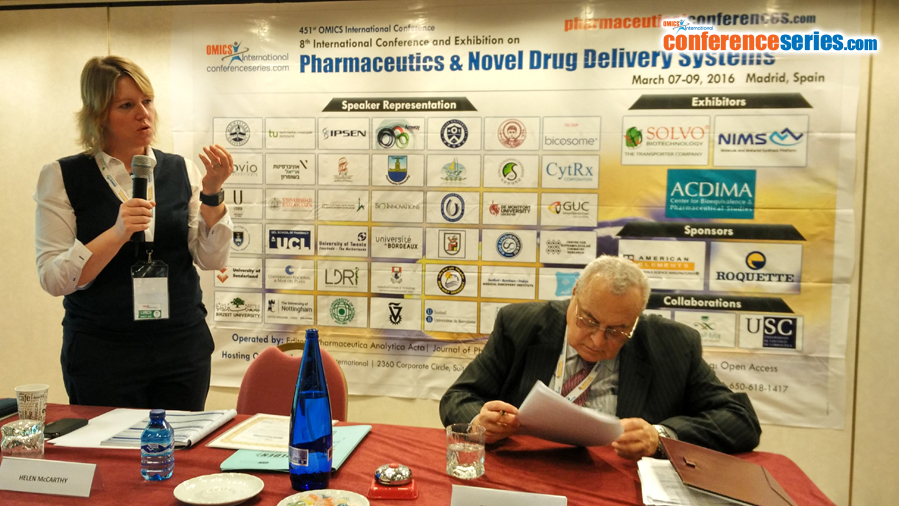
Helen McCarthy
Queen’s University Belfast, Northern Ireland
Title: A new technology for DNA vaccination: RALA peptide-mediated gene delivery via dissolving microneedles
Biography
Biography: Helen McCarthy
Abstract
Cervical cancer has the second highest mortality rate amongst women worldwide, despite the production of recombinant protein HPV vaccines. Limited access in poorer regions, the prophylactic nature of current vaccines and poor patient compliance contribute to a rising incidence. Furthermore, the current vaccine is not effective for those patients with pre-existing HPV lesions. DNA vaccination evokes both therapeutic and prophylactic responses. The bottleneck in the DNA vaccination market lies in an effective delivery technology. The ‘solution’ to this problem is in the two-pronged approach of our technology: (i) a peptide delivery system, termed RALA, that is able to wrap the DNA into nanoparticles, protect the DNA from degradation, enter cells, disrupt endosomes and deliver the DNA to the nucleus and (ii) a microneedle patch (MN) that will house the nanoparticles within the polymer matrix, painlessly breach the skin’s stratum corneum barrier and dissolve upon contact with skin interstitial fluid thus releasing the nanoparticles into the skin to the antigen presenting cells. Using our novel technology platform we have created a DNA vaccine for cervical cancer in a dissolvable microneedle patch. More specifically the MN patch is loaded with RALA/E6-E7 nanoparticles and this study demonstrates stability, functionality and a prophylactic and therapeutic response to cervical cancer tumours in vivo. The RALA/E6/E7 nanoparticles were characterized in terms of gel retardation, size and zeta-potential analysis and transmission electron microscopic imaging. The functionality of the RALA/E6-E7 nanoparticles within the polymeric microneedle matrix was assessed by analysis of transfection efficacy in fibroblast NCTC cells via western blot analysis. Cellular toxicity was also assessed via WST-1 assay. C57/BL6 mice were immunized with the RALA-E6/E7 in a prime-boost-boost regimen and blood serum was isolated to measure specific IgG responses and IFN-γ levels via ELISAs. C57/BL6 mice were also immunised with the MN-RALA/E6-E7 patches and challenged with cervical cancer. A therapeutic response study was performed in vivo. Finally the RALA/E6-E7 nanoparticles were lyophilised to increase the dose that can be loaded into the MN patch. Results proved that RALA was essential for stability of the E6-E7 DNA in PVP and that MN-RALA/E6-E7 evokes a more consistent humoral mediated immune response. Tumour challenge studies indicate the MN-RALA/E6-E7 vaccine patch is preventing the uptake of tumours and treating established tumours. Doses greater than 50 μg were achieved from a single MN patch. We have, therefore, created a fully functional prototype MN/RALA/E6-E7 DNA vaccine for cervical cancer.


